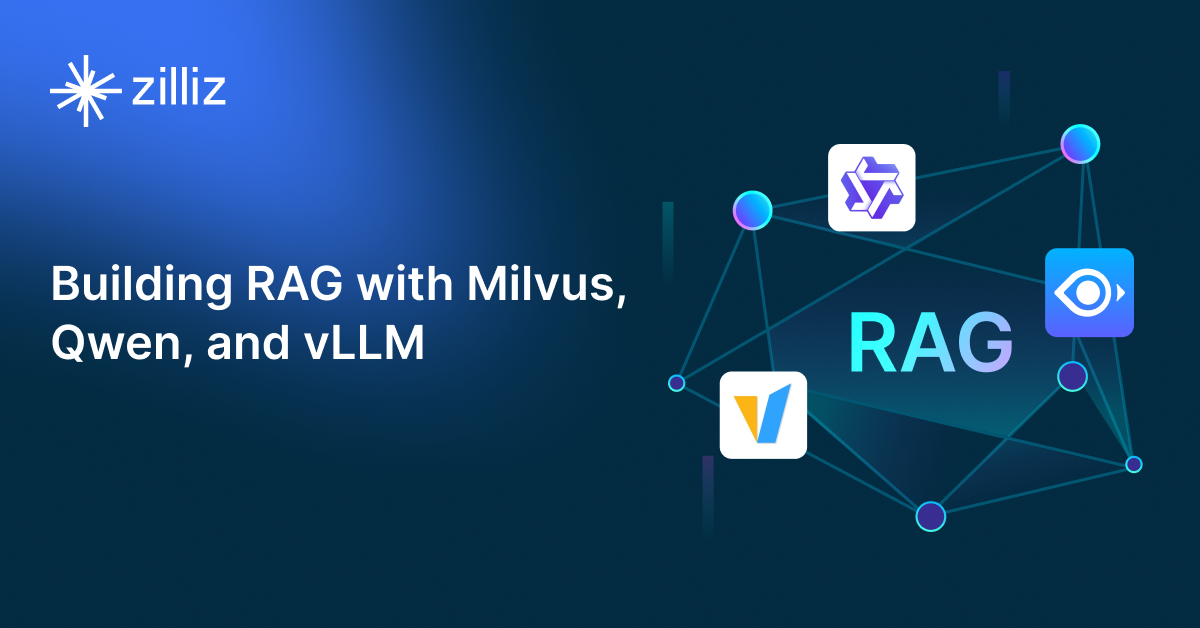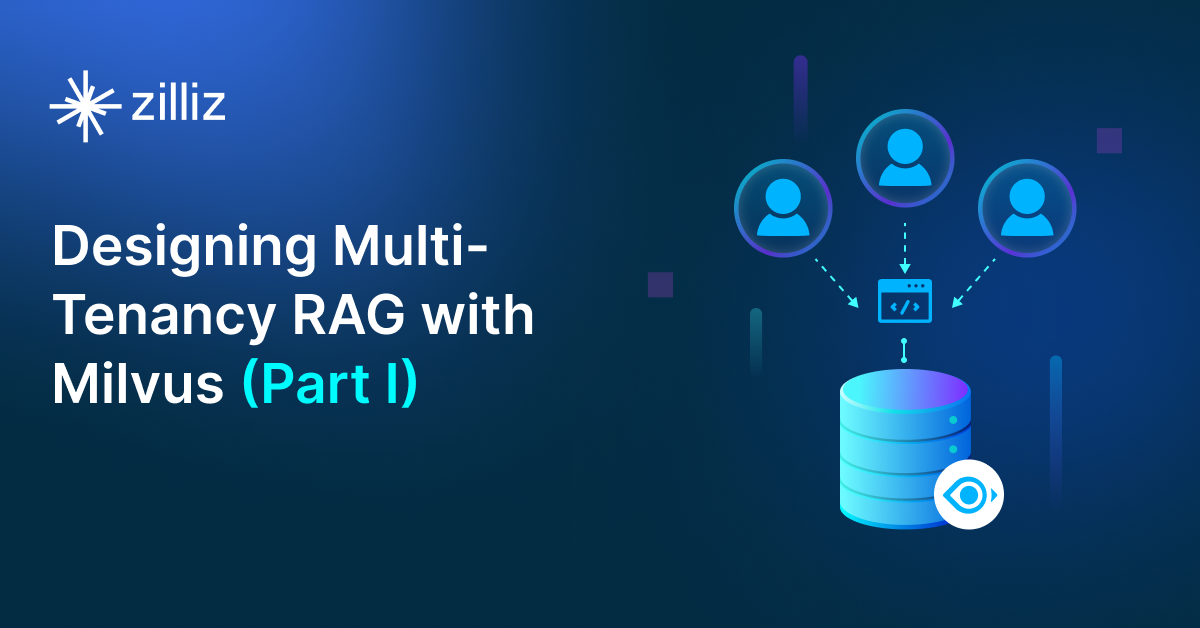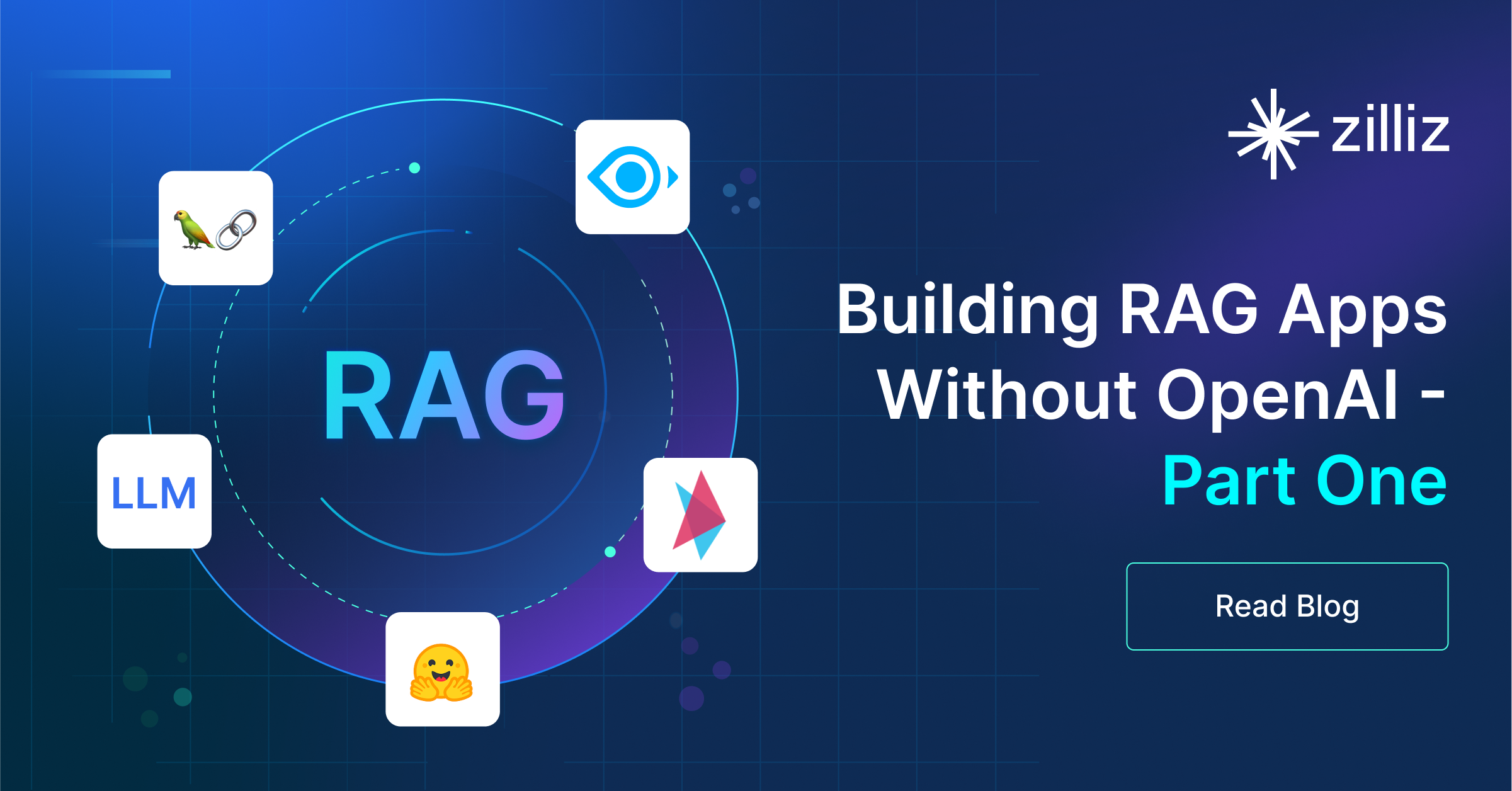Build RAG Chatbot with Llamaindex, Milvus, Mistral Large, and OpenAI text-embedding-3-small
Introduction to RAG
Retrieval-Augmented Generation (RAG) is a game-changer for GenAI applications, especially in conversational AI. It combines the power of pre-trained large language models (LLMs) like OpenAI’s GPT with external knowledge sources stored in vector databases such as Milvus and Zilliz Cloud, allowing for more accurate, contextually relevant, and up-to-date response generation. A RAG pipeline usually consists of four basic components: a vector database, an embedding model, an LLM, and a framework.
Key Components We'll Use for This RAG Chatbot
This tutorial shows you how to build a simple RAG chatbot in Python using the following components:
- Llamaindex: a data framework that connects large language models (LLMs) with various data sources, enabling efficient retrieval-augmented generation (RAG). It helps structure, index, and query private or external data, optimizing LLM applications for search, chatbots, and analytics.
- Milvus: An open-source vector database optimized to store, index, and search large-scale vector embeddings efficiently, perfect for use cases like RAG, semantic search, and recommender systems. If you hate to manage your own infrastructure, we recommend using Zilliz Cloud, which is a fully managed vector database service built on Milvus and offers a free tier supporting up to 1 million vectors.
- Mistral Large: A state-of-the-art language model optimized for advanced reasoning, multilingual tasks, and high-stakes decision-making. It excels in code generation, complex analysis, and cross-lingual understanding, offering scalability, efficiency, and high accuracy for enterprise solutions, AI-driven research, and global customer interaction platforms.
- OpenAI text-embedding-3-small: Designed to generate dense vector representations of text, this model excels in efficiency and cost-effectiveness, optimized for speed and low resource usage. It delivers competitive performance in semantic similarity, retrieval, and clustering tasks, making it ideal for large-scale applications like search engines, recommendation systems, and text classification where balancing accuracy with computational cost is crucial.
By the end of this tutorial, you’ll have a functional chatbot capable of answering questions based on a custom knowledge base.
Note: Since we may use proprietary models in our tutorials, make sure you have the required API key beforehand.
Step 1: Install and Set Up Llamaindex
pip install llama-index
Step 2: Install and Set Up Mistral Large
%pip install llama-index-llms-mistralai
from llama_index.llms.mistralai import MistralAI
llm = MistralAI(model="mistral-large-latest")
Step 3: Install and Set Up OpenAI text-embedding-3-small
%pip install llama-index-embeddings-openai
from llama_index.embeddings.openai import OpenAIEmbedding
embed_model = OpenAIEmbedding(
model="text-embedding-3-small",
)
Step 4: Install and Set Up Milvus
pip install llama-index-vector-stores-milvus
from llama_index.core import VectorStoreIndex, StorageContext
from llama_index.vector_stores.milvus import MilvusVectorStore
vector_store = MilvusVectorStore(
uri="./milvus_demo.db",
dim=1536, # You can replace it with your embedding model's dimension.
overwrite=True,
)
Step 5: Build a RAG Chatbot
Now that you’ve set up all components, let’s start to build a simple chatbot. We’ll use the Milvus introduction doc as a private knowledge base. You can replace it with your own dataset to customize your RAG chatbot.
import requests
from llama_index.core import SimpleDirectoryReader
# load documents
url = 'https://raw.githubusercontent.com/milvus-io/milvus-docs/refs/heads/v2.5.x/site/en/about/overview.md'
example_file = 'example_file.md' # You can replace it with your own file paths.
response = requests.get(url)
with open(example_file, 'wb') as f:
f.write(response.content)
documents = SimpleDirectoryReader(
input_files=[example_file]
).load_data()
print("Document ID:", documents[0].doc_id)
storage_context = StorageContext.from_defaults(vector_store=vector_store)
index = VectorStoreIndex.from_documents(
documents, storage_context=storage_context, embed_model=embed_model
)
query_engine = index.as_query_engine(llm=llm)
res = query_engine.query("What is Milvus?") # You can replace it with your own question.
print(res)
Example output
Milvus is a high-performance, highly scalable vector database designed to operate efficiently across various environments, from personal laptops to large-scale distributed systems. It is available as both open-source software and a cloud service. Milvus excels in managing unstructured data by converting it into numerical vectors through embeddings, which facilitates fast and scalable searches and analytics. The database supports a wide range of data types and offers robust data modeling capabilities, allowing users to organize their data effectively. Additionally, Milvus provides multiple deployment options, including a lightweight version for quick prototyping and a distributed version for handling massive data scales.
Optimization Tips
As you build your RAG system, optimization is key to ensuring peak performance and efficiency. While setting up the components is an essential first step, fine-tuning each one will help you create a solution that works even better and scales seamlessly. In this section, we’ll share some practical tips for optimizing all these components, giving you the edge to build smarter, faster, and more responsive RAG applications.
LlamaIndex optimization tips
To optimize LlamaIndex for a Retrieval-Augmented Generation (RAG) setup, structure your data efficiently using hierarchical indices like tree-based or keyword-table indices for faster retrieval. Use embeddings that align with your use case to improve search relevance. Fine-tune chunk sizes to balance context length and retrieval precision. Enable caching for frequently accessed queries to enhance performance. Optimize metadata filtering to reduce unnecessary search space and improve speed. If using vector databases, ensure indexing strategies align with your query patterns. Implement async processing to handle large-scale document ingestion efficiently. Regularly monitor query performance and adjust indexing parameters as needed for optimal results.
Milvus optimization tips
Milvus serves as a highly efficient vector database, critical for retrieval tasks in a RAG system. To optimize its performance, ensure that indexes are properly built to balance speed and accuracy; consider utilizing HNSW (Hierarchical Navigable Small World) for efficient nearest neighbor search where response time is crucial. Partitioning data based on usage patterns can enhance query performance and reduce load times, enabling better scalability. Regularly monitor and adjust cache settings based on query frequency to avoid latency during data retrieval. Employ batch processing for vector insertions, which can minimize database lock contention and enhance overall throughput. Additionally, fine-tune the model parameters by experimenting with the dimensionality of the vectors; higher dimensions can improve retrieval accuracy but may increase search time, necessitating a balance tailored to your specific use case and hardware infrastructure.
Mistral Large optimization tips
To enhance Mistral Large’s performance in RAG systems, prioritize efficient context handling by truncating or summarizing retrieved documents to fit its token limit while retaining key information. Fine-tune prompts to explicitly guide the model to reference retrieved content, using phrases like “based on the provided context.” Adjust temperature settings (lower for factuality, higher for creativity) and max token limits to balance output quality and length. Implement caching for frequent queries, and use parallel processing to speed up document retrieval. Regularly evaluate retrieval relevance scores to ensure high-quality inputs, and experiment with chunk sizes/overlaps during indexing to optimize context granularity.
OpenAI text-embedding-3-small optimization tips
Optimize input text by truncating or chunking to stay within the 8191-token limit while preserving semantic context. Normalize embeddings to unit vectors to improve cosine similarity accuracy. Batch embedding requests to reduce API calls and latency. Experiment with dimensionality reduction (e.g., 256-dim) to balance performance and storage costs. Preprocess text by removing redundant or noisy content and standardizing formats (lowercase, trimming whitespace). Cache frequent or static embeddings to avoid redundant computations. Monitor retrieval quality via metrics like recall@k and adjust chunking strategies or hybrid retrieval methods if needed. Fine-tune temperature and top-k parameters during generation to align with embedding outputs.
By implementing these tips across your components, you'll be able to enhance the performance and functionality of your RAG system, ensuring it’s optimized for both speed and accuracy. Keep testing, iterating, and refining your setup to stay ahead in the ever-evolving world of AI development.
RAG Cost Calculator: A Free Tool to Calculate Your Cost in Seconds
Estimating the cost of a Retrieval-Augmented Generation (RAG) pipeline involves analyzing expenses across vector storage, compute resources, and API usage. Key cost drivers include vector database queries, embedding generation, and LLM inference.
RAG Cost Calculator is a free tool that quickly estimates the cost of building a RAG pipeline, including chunking, embedding, vector storage/search, and LLM generation. It also helps you identify cost-saving opportunities and achieve up to 10x cost reduction on vector databases with the serverless option.
 Calculate your RAG cost
Calculate your RAG cost
What Have You Learned?
Congratulations on reaching the end of this tutorial! You’ve learned how to effectively integrate four powerful components—LlamaIndex as your strategic framework, Milvus as your high-performance vector database, Mistral Large for your language model needs, and the OpenAI text-embedding-3-small model for advanced text representations—to create a robust Retrieval-Augmented Generation (RAG) pipeline. Each piece of this puzzle complements the others beautifully: LlamaIndex organizes your data, Milvus retrieves information at lightning speed, Mistral Large generates coherent and contextually relevant responses, and the embedding model ensures that your data is represented optimally for the best results. You've also picked up some handy optimization tips along the way, and don’t forget about the bonus - the free RAG cost calculator to help you forecast expenses as you scale your innovative applications.
Now that you have this foundational knowledge, the possibilities for building your own RAG applications are truly endless! As you dive into this exciting realm, think about how you can optimize these components further to meet your specific needs or push the boundaries of what’s possible. Remember, every great project starts with a simple idea. So take what you've learned here, keep experimenting, and don’t hesitate to innovate. The world of RAG systems is at your fingertips, and I can’t wait to see what amazing solutions you’ll create. Get started building and make a splash in the rapidly evolving tech landscape!
Further Resources
🌟 In addition to this RAG tutorial, unleash your full potential with these incredible resources to level up your RAG skills.
- How to Build a Multimodal RAG | Documentation
- How to Enhance the Performance of Your RAG Pipeline
- Graph RAG with Milvus | Documentation
- How to Evaluate RAG Applications - Zilliz Learn
- Generative AI Resource Hub | Zilliz
We'd Love to Hear What You Think!
We’d love to hear your thoughts! 🌟 Leave your questions or comments below or join our vibrant Milvus Discord community to share your experiences, ask questions, or connect with thousands of AI enthusiasts. Your journey matters to us!
If you like this tutorial, show your support by giving our Milvus GitHub repo a star ⭐—it means the world to us and inspires us to keep creating! 💖
- Introduction to RAG
- Key Components We'll Use for This RAG Chatbot
- Step 1: Install and Set Up Llamaindex
- Step 2: Install and Set Up Mistral Large
- Step 3: Install and Set Up OpenAI text-embedding-3-small
- Step 4: Install and Set Up Milvus
- Step 5: Build a RAG Chatbot
- Optimization Tips
- RAG Cost Calculator: A Free Tool to Calculate Your Cost in Seconds
- What Have You Learned?
- Further Resources
- We'd Love to Hear What You Think!
Content
Vector Database at Scale
Zilliz Cloud is a fully-managed vector database built for scale, perfect for your RAG apps.
Try Zilliz Cloud for Free


